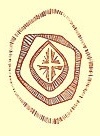A Catholic website for the modern reader

Holy Thursday
by
Fr. William Messenger
When a person whom we have known and loved dies, we immediately begin recalling moments and events in our relationship. In our recollection, we highlight the last time we were together as of special import.
Obviously, Jesus had many meals with his disciples, and there is evidence to support that they celebrated the Eucharist often. But the last time they ate and celebrated Eucharist is of paramount importance--it was the last time and they remembered.
But there is yet another, more compelling reason: The Lord's Supper is inseparably linked to death and resurrection. From very earliest days, the Church has celebrated these events together in TRIDUUM. The emphasis is on unity of days--on NOT separating death from resurrection. The Church could never speak of or understand one without the other. TRIDUUM is a single celebration.
Above all else then, the parish liturgy for this evening is our entrance into these three days. Even before thinking of this night as a commemoration of the Lord's Supper, we must see it as the first movement in the EASTER TRIDUUM. Lent is over, and with Thursday we begin one whole commemoration of the passion, death, and resurrection of Jesus. Thursday cannot and should not be cut off from Friday and Saturday.
The EASTER TRIDUUM celebrates the key elements of initiation into the community of Christians: the fast and prayer, Baptism, Confirmation and Eucharist. The TRIDUUM is kept as an annual Passover for the whole community. It is our passing over from death to life in Jesus. Thursday evening is characterized by our service to each other and the world.
There is to be only one Lord's Supper and it must be celebrated during evening hours.
The liturgy consists of the following parts:
- LITURGY OF THE WORD
- washing of feet
- LITURGY OF THE EUCHARIST
- PROCESSION
a) LITURGY OF THE WORD:
The readings all recall and make present, the theme of Passover. The Israelites were saved when the angel of the Lord "passed over" their homes and did not kill their first-born. We are saved when Jesus passes through death to life and removes from over us the power of sin and death.
The washing of feet symbolizes that Passover is offered to all people and that it is offered through a life of service. We received that life of service from the Lord, so, like the Lord, we serve one another.
b) LITURGY OF THE EUCHARIST:
Special attention is given this evening to the simplicity of a meal and our service of one another. It is especially appropriate that gifts or donations for the poor be brought forward and not donations for the church. These gifts accompany the bread and wine. Unity, which is always essential to the Eucharist, should certainly be emphasized this evening.
c) PROCESSION:
The liturgy ends with a functional event: the left over bread is removed from the table and taken to where it is kept for the sick and for Good Friday. The procession should be solemn and dignified, but not exaggerated. All depart in silence.
We have now entered into the Passover of the Lord--our Passover. We prayerfully await the gift of new life--Resurrection!!!
(Fr. William Messenger is a priest in the Archdiocese of Los Angeles)
